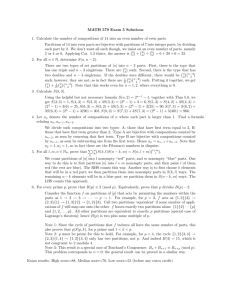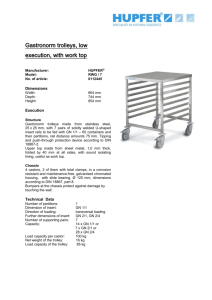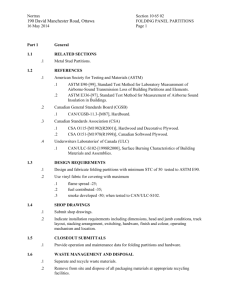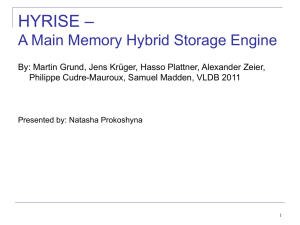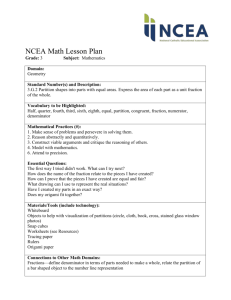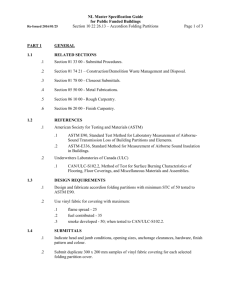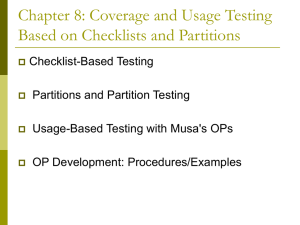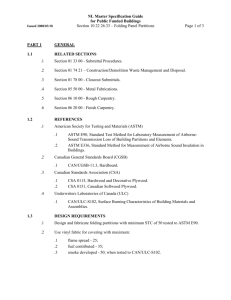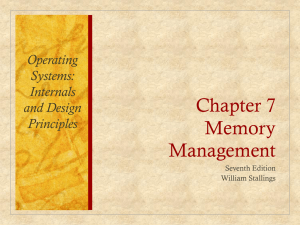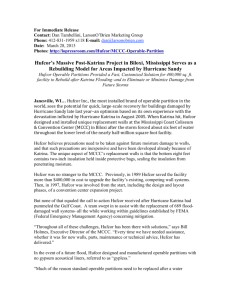Additive Integer Partitions
advertisement
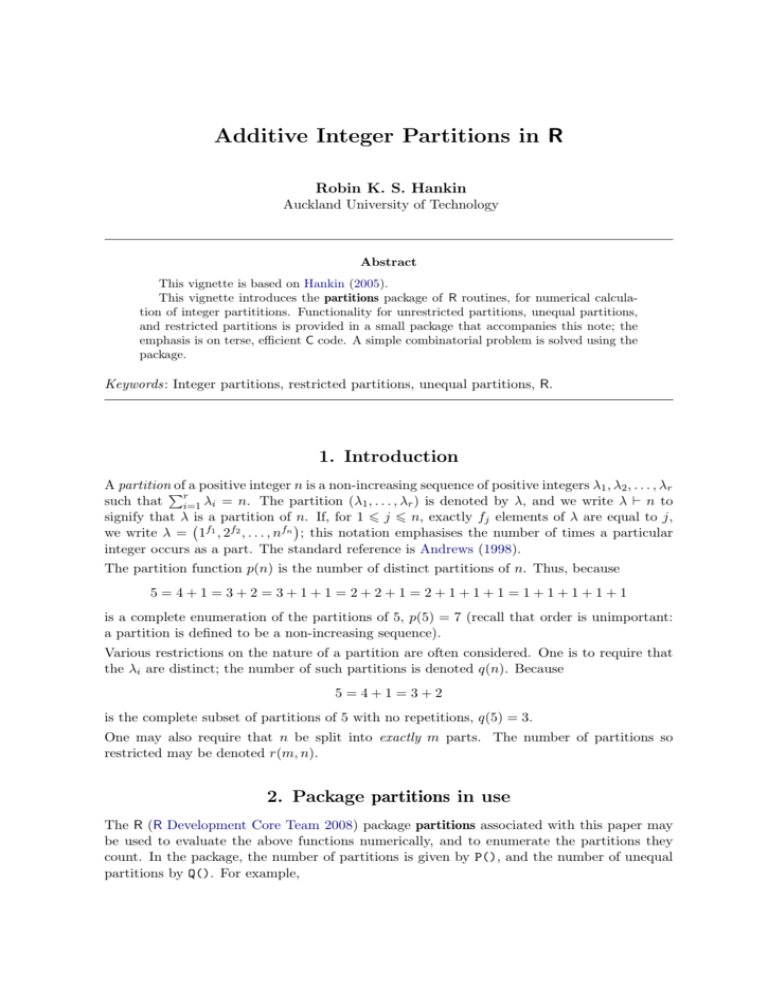
Additive Integer Partitions in R
Robin K. S. Hankin
Auckland University of Technology
Abstract
This vignette is based on Hankin (2005).
This vignette introduces the partitions package of R routines, for numerical calculation of integer partititions. Functionality for unrestricted partitions, unequal partitions,
and restricted partitions is provided in a small package that accompanies this note; the
emphasis is on terse, efficient C code. A simple combinatorial problem is solved using the
package.
Keywords: Integer partitions, restricted partitions, unequal partitions, R.
1. Introduction
A partitionP
of a positive integer n is a non-increasing sequence of positive integers λ1 , λ2 , . . . , λr
such that ri=1 λi = n. The partition (λ1 , . . . , λr ) is denoted by λ, and we write λ ` n to
signify that λ is a partition of n. If, for 1 6 j 6 n, exactly fj elements of λ are equal to j,
we write λ = 1f1 , 2f2 , . . . , nfn ; this notation emphasises the number of times a particular
integer occurs as a part. The standard reference is Andrews (1998).
The partition function p(n) is the number of distinct partitions of n. Thus, because
5=4+1=3+2=3+1+1=2+2+1=2+1+1+1=1+1+1+1+1
is a complete enumeration of the partitions of 5, p(5) = 7 (recall that order is unimportant:
a partition is defined to be a non-increasing sequence).
Various restrictions on the nature of a partition are often considered. One is to require that
the λi are distinct; the number of such partitions is denoted q(n). Because
5=4+1=3+2
is the complete subset of partitions of 5 with no repetitions, q(5) = 3.
One may also require that n be split into exactly m parts. The number of partitions so
restricted may be denoted r(m, n).
2. Package partitions in use
The R (R Development Core Team 2008) package partitions associated with this paper may
be used to evaluate the above functions numerically, and to enumerate the partitions they
count. In the package, the number of partitions is given by P(), and the number of unequal
partitions by Q(). For example,
2
Integer Partitions in R
> P(100)
[1] 190569292
agreeing with the value given by Abramowitz and Stegun (1965). The unequal partitions of
an integer are enumerated by function diffparts():
> diffparts(10)
[1,] 10 9 8 7
[2,] 0 1 2 3
[3,] 0 0 0 0
[4,] 0 0 0 0
7
2
1
0
6
4
0
0
6
3
1
0
5
4
1
0
5
3
2
0
4
3
2
1
where the columns are the partitions. Finally, function restrictedpartitions() enumerates
the partitions of an integer into a specified number of parts.
2.1. A combinatorial example
Consider random sampling, with replacement, from an alphabet of a letters. How many draws
are required to give a 95% probability of choosing each letter at least once? I show below
how the partitions package may be used to answer this question exactly.
A little thought shows that the number of ways to draw each letter at least once in n draws
is
X
n!
a!
Qr
· Qn
(1)
N=
i=1 fi !
j=1 λi !
λ`n;a
where the sum extends over partitions λ of n into exactly a parts; the first term gives the
number of ways of assigning a partition to letters; the second gives the number of distinct
arrangements.
The corresponding R idiom is to define a nonce function f() that returns the product of
the two denominators, and to sum the requisite parts by applying f() over the appropriate
restricted partitions. The probability of getting all a letters in n draws is thus N/an , computed
by function prob():
> f <- function(x){prod(factorial(x),factorial(tabulate(x)))}
> prob <- function(a,n){
+
jj <- restrictedparts(n,a,include.zero=FALSE)
+
N <- factorial(a)*factorial(n)*sum(1/apply(jj,2,f))
+
return(N/a^n)
+ }
In the case of a = 4, we obtain n = 16 because prob(4,15) ' 0.947 and prob(4,16) ' 0.96.
3. Conclusions
The partitions package was developed to answer the combinatorial word question discussed
above: it does so using fast C code. Further work would include the enumeration of compositions and vector compositions.
Robin K. S. Hankin
3
Acknowledgement
I would like to acknowledge the many stimulating and helpful comments made by the R-help
list while preparing the package.
References
Abramowitz M, Stegun IA (1965). Handbook of Mathematical Functions. New York: Dover.
Andrews GE (1998). The Theory Of Partitions. Cambridge University Press.
Hankin RKS (2005). “Additive integer partitions in R.” Journal of Statistical Software, Code
Snippets, 16(1).
R Development Core Team (2008). R: A Language and Environment for Statistical Computing.
R Foundation for Statistical Computing, Vienna, Austria. ISBN 3-900051-07-0, URL http:
//www.R-project.org.
Affiliation:
Robin K. S. Hankin
Auckland University of Technology
AUT Tower
Wakefield Street
Auckland, New Zealand
E-mail: hankin.robin@gmail.com

